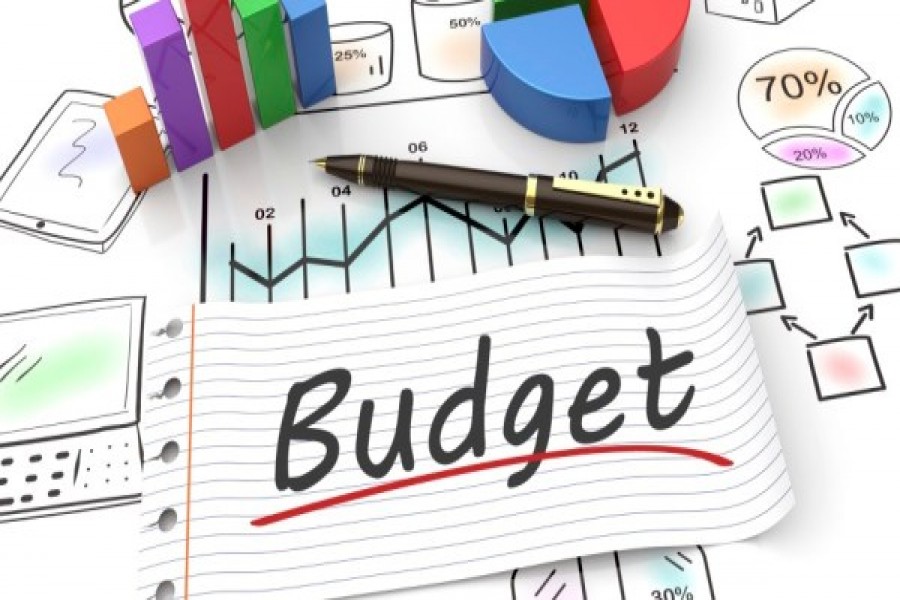According to the provisional data of the Bangladesh Bureau of Statistics (BBS), Bangladesh's economy has grown 7.25 per cent in the outgoing fiscal year of 2021-22. This is a remarkable achievement indeed considering the fact that the economy was hit by the coronavirus pandemic several times. Even at the beginning (July-August) of the fiscal year 2021-22, the country was under lockdown for several weeks. However, with the good news of the high GDP growth rate for the current fiscal year, the government is going to announce the national budget for the next fiscal year (2022-23). Which sectors of the economy should be prioritised in the upcoming budget?
The most important sector of the economy is agriculture as this sector not only accounts for a significant proportion of GDP but also ensures food security for about 160 million people. Moreover, this sector employs 40.6 per cent of the total employed population in the country. In the fiscal year 2019-20 when the country was under lockdown for more than two months, this sector grew at the rate of 3.42 per cent. However, farmers are unlikely to enjoy the benefits of the high GDP growth rate in the country because, BBS data show that the wage rate of agricultural workers is increasing at a higher rate than the price of rice, the most important crop produced in the country. For example, the harvest time price of Boro HYV rice increased by 11.7 per cent in 2020/21 compared to 2018/19 against the agricultural wage rate increase of 13.3 per cent during the same period.
Further, diesel price is also increasing over time. Hence, it is important that the agriculture sector is prioritised in the upcoming budget. The amount of subsidy for fertiliser and other inputs remained almost the same in the last few years. Hence in the real term, the amount of support decreased over time. The next budget should thus substantially increase the amount of subsidy for the agriculture sector.
Though Bangladesh's economy is witnessing high growth, income inequality is also increasing. Thus, the budget should focus on pro-poor growth and employment generation. Moreover, the government should increase the amount of support to poor people through social safety nets so that consumption inequality is reduced. Hence, the allocation for social safety nets should be increased significantly in the upcoming budget. As the prices of many essential goods are increasing over time, the amount of allowance per person/household for safety nets like widowed allowance, old-age allowance, disabled allowance, etc. must be increased in the budget for the fiscal year 2022-23.
Controlling inflation should be another priority in the upcoming national budget as the prices of some goods have increased significantly. The price of rice however remains stable. Data from the Department of Agricultural Marketing show that the retail price per KG of coarse rice (boro) in Dhaka Sadar decreased from Tk 45.73 on May 25, 2021 to 44.41 on May 24, 2022. However, to control inflation, the amount of subsidy to the farm sector needs to be increased (as discussed previously) and the taxes for importable goods need to be lowered.
Unemployment is a major problem in the country. The country achieved very high GDP growth in the last decade but the rate of unemployment remained almost the same. Data from Labour Force Surveys show that in 2013 and 2016/17 unemployment rates were 4.3 per cent and 4.2 per cent respectively. Moreover, the number of employed population increased by only 4.6 per cent (from 58.1 million to 60.8 million) in 2016/17 compared to 2013. The size of the labour force increased during the same period; as a result, the absolute number of unemployed population increased in 2016/17 compared to 2013 (from 2.6 million in 2013 to 2.7 million in 2016/17).
Another worrying thing is that a large share of the employed population (85.1 per cent in 2016/17) is engaged in the informal sector. Increasing access to the credit may decrease unemployment. NGOs are historically playing an important role in providing credit in rural areas. The government banks should expand their coverage. International migration provides employment opportunities to a large number of low-skilled workers in Bangladesh but the proportion of female migrants is still very low. Skill development of female workers may increase female migration, thereby decreasing the unemployment rate among females. The budget should increase allocation for providing training to more female workers. To generate more employment in the economy, the amount of private sector investment needs to be increased. The amount of private investment as a percentage of GDP increased only marginally from 23.66 per cent in 2016-17 to 23.70 per cent in 2020/21. The budget should prioritise policies to increase private sector investment.
Sustained poverty reduction requires that the poor have access to low-cost and quality health services. However, the per capita health expenditure in Bangladesh is low compared to many south Asian countries. According to World Bank data, in 2018, per capita government expenditure in the health sector was USD 256 in Bhutan, USD 63 in Pakistan, USD 74 in India, USD 212 in Sri Lanka, and USD 1019 in the Maldives, whereas Bangladesh spent only about USD 19 per capita. Hence, the health sector should be also prioritised in the national budget for the fiscal year 2022-23.
Additional subsidies to the agriculture sector and other additional expenditures should be financed by increasing the tax-GDP ratio. Comparable data from the World Bank indicate that tax-GDP ratio in Bangladesh was 8.8 per cent in 2016 whereas in India, Sri Lanka, and Nepal the proportions were 11.1 per cent, 12.2 per cent and 18.7 per cent, respectively. It is thus important that the government finds ways to increase tax revenues.
Narayan Das, Associate Professor, BRAC Institute of Governance and Development (BIGD), BRAC University


